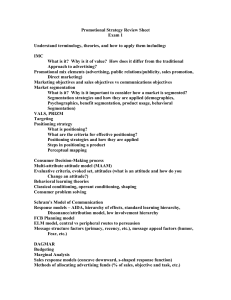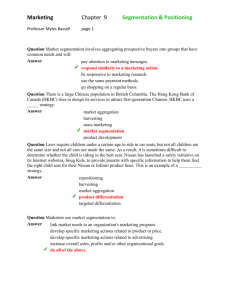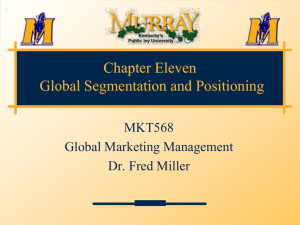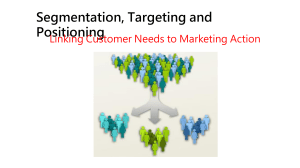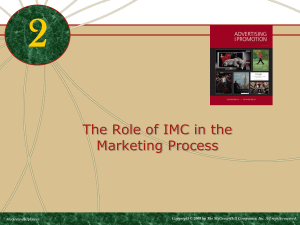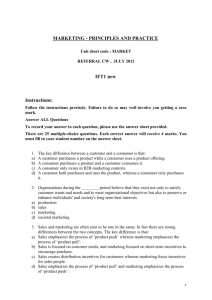notes
advertisement
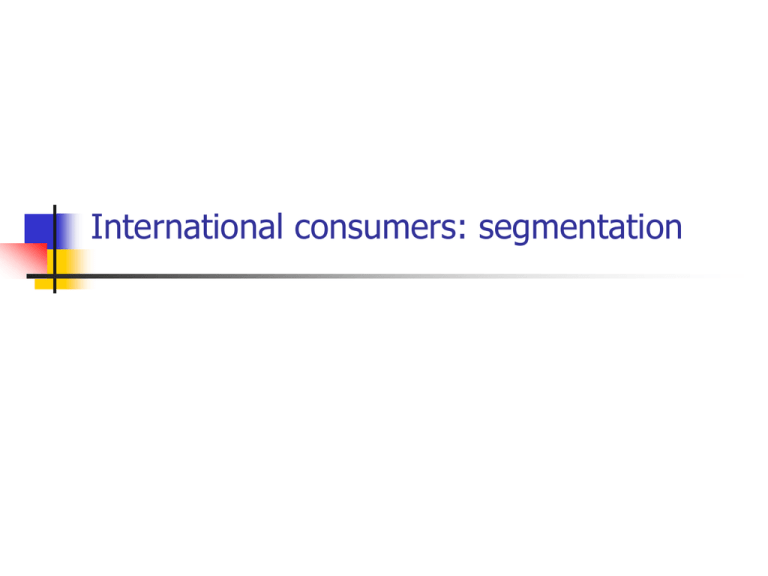
International consumers: segmentation Segmentation ‘the process of identifying specific segments - whether they be country groups or individual consumer groups of potential customers with homogeneous attributes who are likely to exhibit similar buying behaviour’ ( Hassan and Katsanis 1992) Part of a key marketing analysis process Segmentation Targeting Positioning Segmentation methods/variables (Keegan and Schlegelmilch 2001) Demographic Psychographic Behavioural Benefits sought Geographic Cultural Usually linked into a profile Demographic Age, gender, population size, income, education, lifecycle stage Beware! Not all statistics are presented in the same way. E.g. definitions of socio/economic groups differ Demographic segmentation Age is commonly used to identify global segments E.g. global teenagers 12 to 19 linked to: Fashion Lifestyle Music Brand preferences Psychographic segmentation Based on : Attitudes and values Lifestyle ( behaviour determined by attitudes and values) Data collected on activities, interests and opinions (AIO studies) E.g. YUPPI Young Upwardly-mobile Person E.g. DINKY Double income No kids SINBAD Single No blokes and Desperate Global Scan*:AIO study (18 countries in Triad regions) Strivers (26%): young, ambitious, materialistic, hedonistic Achievers (22%): older, affluent, successful, status conscious, quality focused Pressured (13%): women, family/life/financial problems Adapters (18%): older, content, value-centred, open about change Traditionals (16%): ’rooted to the past’, cling to country’s heritage and culture *Backer, Spielvogel and Bates Behavioural segmentation Who buys it? How often? What for? Who for? Who doesn’t buy it? Who no longer buys it? Benefit segmentation What added value do I get? E.g. Volvo offers safety Rolls Royce offers status Products are bundle of benefits not physical objects Multiple-attribute segmentation E.g. A watch Segmentation variable Style conscious Fun oriented Benefit sought Symbol of status Time keeping/Games Gender Male Male and female Age 25-40 14-18 Occupation Professionals School students Income £30k+ Parental Usage rate Daily Daily Lifestyle Attitudes and values Fast moving, Leisure: Sports, cinema Materialistic, international School activities Video games, music Local culture orientation Location Global Multi-domestic Targeting 2 steps: Assessing the opportunity in each segment Selecting the target segment(s) Assessing the opportunity – the criteria 1. Market: size and growth: 2. The competition: 3. In one country (China) Across the globe (the MTV generation) How strong? (Coke v Pepsi –100% share in Russia) Are there gaps? What are their weaknesses? (Japanese 4-year PLC) Compatibility and feasibility Resources? Organisational structure? Competitive advantage? Positioning Defining a product/service/organisation in terms of its similarity/dissimilarity to competitors Aims to establish a unique positioning which meets needs of defined market segments (Ries and Trout 1981) ‘Positioning…is not what you do to a product…(it) is what you do to the mind of the prospect’ (Ries and Trout) The positioning ‘Positioning strategy distinguishes a company’s service offers from those of its competitors’ (Palmer) ‘Positioning puts a firm in a subsegment of its chosen market’ (Palmer) BMW’s European positioning 1992
